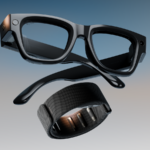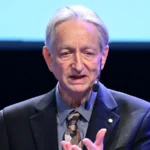A neural network, a series of algorithms that strives to recognize underlying relationships in a set of given data with a mimicking process that is akin to the human brain operation, has be drafted to learn to solve myriads of problems: from identifying cats in photographs, to steering a self driving car, neural networks refer to a system of neurons that can either be organic or artificial in nature.
In more explicit terms, a neural network can either be a biological neural network, that consists of biological neurons or an artificial neural network drafted for resolving Artificial Intelligence (AI) issues.
But over the years, neural networks have a seeming limitation: they were not able to actually understand the tasks they are performing in very clear terms and this is what the team at MIT sought to solve.
An example of such limitation is a situation where a neural network was saddled with the responsibility of keeping a self-driving car in its stated lane; it will do so by watching the bushes at the side of the road, instead of actually learning to detect the real stated lanes, while focusing on the road’s horizon.
Massachusetts Institute of Technology (MIT) researchers taking cognizance of these limitations, had began a fact-finding mission to further study the neural networks with a previous work on Neural Circuit Policy (NCP), serving as a groundwork for the study.
The MIT researchers then demonstrated that a neural network certain type has the capacity to learn the true cause and effect structure of the navigation task it has be programmed to perform. Having being availed that these networks understand the tasks directly from visual data, the team opined that they should be more effective than other neural networks in the process of navigating in complex environments like places with rapidly changing weather conditions.
The work whose Co-authors include electrical engineering and computer science graduate student and co-lead author Charles Vorbach; CSAIL PhD student Alexander Amini; Institute of Science and Technology Austria graduate student Mathias Lechner; and senior author Daniela Rus, the Andrew and Erna Viterbi Professor of Electrical Engineering and Computer Science and director of CSAI can be used in the future to improve the reliability and trustworthiness of machine learning agents that are performing high-stakes tasks, like driving an autonomous vehicle on a busy highway.
The research supported by the United States Air Force Research Laboratory, the United States Air Force Artificial Intelligence Accelerator, and the Boeing Company, will be presented at the 2021 Conference on Neural Information Processing Systems (NeurIPS) in December. The study draws on previous work in which the team showed how a brain-inspired type of deep learning system known as a Neural Circuit Policy (NCP), developed by liquid neural network cells, has the capacity to autonomously control a self-driving vehicle, with just 19 control neurons.

MIT researchers have demonstrated that a special class of deep learning neural networks is able to learn the true cause-and-effect structure of a navigation task during training. Credit: Stock Image
The lead author of the research, Ramini Hasani, a postdoc in the Computer Science and Artificial Intelligence Laboratory (CSAIL), while analysing the no more latent work of the research team said:
“Because these machine-learning systems are able to perform reasoning in a causal way, we can know and point out how they function and make decisions. This is essential for safety-critical applications”.
In the self-car driving example stated earlier, the team observed that the Neural Circuit Policy (NCP) that helps the car perform a lane-keeping task focused attention on the road horizon and its borders when controlling a self-driving car, just the same way a human would do when driving a car, effectively helping to resolve the earlier limitation of Neural networks.
“That was a cool observation, but we didn’t quantify it. So, we wanted to find the mathematical principles of why and how these networks are able to capture the true causation of the data,” he says.
The team also noted that the network of the NCP learns to interact with the environment and account for interventions when being trained to complete a task, a process that in essence shows the network recognizing when its output gets changed by a certain intervention, while it related the cause and effect together.
In training, the network is pushed forward to generate an output and then pushed backward to correct for errors. It was observed that the NCPs relate cause-and-effect during forward-mode and backward-mode, enabling the network to place much focused attention on the true causal structure of a task.
The team did not have to impose additional constraints on the system for it to learn this causality.
A senior author of the study, Daniela Rus has this to say about the process:
“Causality is especially important to characterize for safety-critical applications such as flight. Our work demonstrates the causality properties of Neural Circuit Policies for decision-making in flight, including flying in environments with dense obstacles such as forests and flying in formation.”
The team tested NCPs on a series of stimulations where autonomous drones had navigation tasks performed, with each drone using inputs from a single camera to navigate. The drones were then assigned with travelling to a ‘target object’, chasing a moving object and then following marked series in different environments, which included a forest and a neighbourhood. The drones also travelled in varying weather conditions like clear skies, heavy rain and fog.
With this process, the NCPs performed on simpler tasks in good weather, outperforming them all on the very challenging tasks like chasing a moving object in a rainstorm.
“We observed that NCPs are the only network that pays attention to the object of interest in different environments while completing the navigation task, wherever you test it, and in different lighting or environmental conditions. This is the only system that can do this casually and actually learn the behaviour we intend the system to learn,” Rus says.
The researcher’s findings implied that the use of NCPs has the capacity to enable autonomous to successfully navigate in environments, for instance an hitherto sunny landscape that became foggy.
“Once the system learns what it is actually supposed to do, it can perform well in novel scenarios and environmental conditions it has never experienced. This is a big challenge of current machine learning systems that are not causal. We believe these results are very exciting, as they show how causality can emerge from the choice of a neural network,” he says.
The researchers can also in the future use NCPs to create larger systems, a process of aligning millions of networks could help them perform more complicated tasks.
Reference: “Causal Navigation by Continuous-time Neural Networks” by Charles Vorbach, Ramin Hasani, Alexander Amini, Mathias Lechner and Daniela Rus, 15 June 2021, Computer Science > Machine Learning.
arXiv:2106.08314
Discover more from TechBooky
Subscribe to get the latest posts sent to your email.







